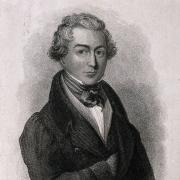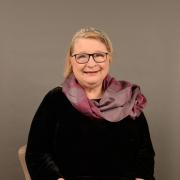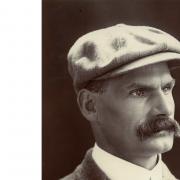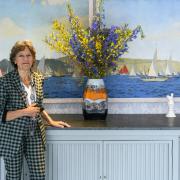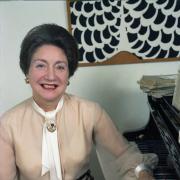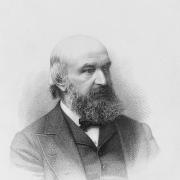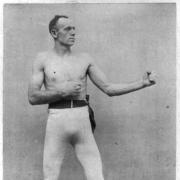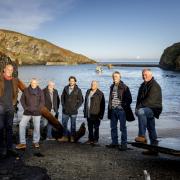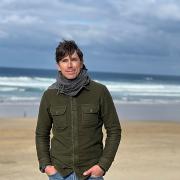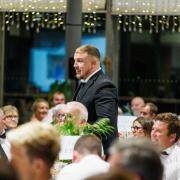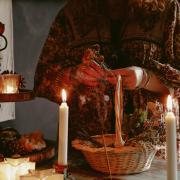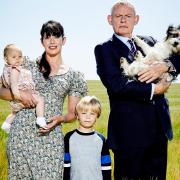At 85, Elizabeth Sharrat is a whizz at digital imagery. Cornwall Life finds out how she and her husband, Roger, became so accomplished at a skill usually associated with young students
Elizabeth Sharratt was born in an age of large-format cameras and flashbulb photography. An annual family photo shoot was a treat and drawings were the only way ordinary families could capture holiday images. Eight decades on, using the latest digital technology, Elizabeth not only records her many adventures overseas, she's at the forefront of image manipulation, spreading the word about just what is possible with the latest technology on your computer.
At 85, Elizabeth has proved age is no barrier to learning new tricks. And she's so good at producing digital images, using her camera and computer, that she's now teaching others on a University of the Third Age (U3A) course. Her photographic skills are also in demand at local events. She, and her similarly artistic husband, Roger, won a clutch of prizes at a recent photographic show, and their work is on display in the library of Roseland Parc retirement village in Tregony, near Truro, where they both moved last September.
Her interest in art dates back to school. She was a pupil at Cot House School in St Just, Penwith. "My father was put in charge of the radio station at the Lizard, so we moved there. There was no bus in the morning so I used to walk the mile to school. Sometimes the wind off the Atlantic was so strong I wondered how I was going to make it," she adds. "This was in the 1920s and we didn't have a car."
When Elizabeth was ten years old, the family left Cornwall for the Isle of Wight. She joined in the war effort as a civil servant, with responsibility for writing the certificates of competence for officers in the Merchant Navy. "We had to do faultless calligraphy and copperplate," she explains.
Over the years Elizabeth has turned her hand to a host of hobbies, from organising classical music concerts to bee-keeping and becoming a national honey judge. She has also worked as an occupational therapist, teaching arts and crafts to mentally disabled and elderly people. "I'm just one of those people who gets enthusiastic about things," she admits.
In 1970, she was set to visit her sister in Canada. Before she flew across the Atlantic, her father handed her her first camera with instructions to take lots of pictures. She did. And when she showed them to her father he spotted her potential. "He said he'd better get me a better camera," says Elizabeth. From then on, everywhere Elizabeth went she had a camera around her neck. "I used to process my own pictures and did a little bit of experimenting with both colour and black-and-white images," she said.
Then she met third husband Roger - her optician - and married him in 1991. "We've heard all the jokes about looking into each other's eyes," Elizabeth says. "I was already interested in photography," explains Roger, who retrained at the age of 50 after being made redundant from his job as a civil engineer. "But I approached it from a technical rather than an art view point."
Travelling became a huge part of the couple's life. They jetted off to America, cruised round the coast of South America, went on safari in Africa and visited family in Australia - always with their cameras. The advent of digital imagery was a turning point for them, and now they develop their own pictures and have fun with them.
"We took a course at the University of South Glamorgan to learn the basics of digital photography and both loved it. We started taking more pictures, enhancing the colours, cropping, brightening and altering certain aspects," says Elizabeth. "We loved the idea that you could create a new image from a clutch of others."
Roger describes his work as "idiosyncratic". He manipulates buildings, recreates views and group shots. His 'masterpiece' is a picture of a house, with groups of people dropping down from the sky; it's called 'Friends Dropping In'. Meanwhile, Elizabeth spends hours enhancing original pictures - removing ugly telegraph wires, cropping out extraneous parts, brightening the colour or blurring a background to focus the eye.
"We use Adobe Photoshop but there is a piece of software called Elements which gives you all the basic tools you need," explains Elizabeth. When she joined a computer club she realised she knew as much about basic manipulation as the tutors in the Digital Imaging Group. When one tutor dropped out, she stepped in.
When the couple moved to Roseland Parc retirement village from their Sussex home, they threw themselves into Cornish life. They joined the congregation at their local church in Tregony and were soon appointed 'unofficial photographers'. Elizabeth joined the Roseland Branch of the U3A - a self-help organisation for people no longer in full-time employment - which provides educational, creative and leisure opportunities.
Local U3As are learning co-operatives which draw upon the knowledge, experience and skills of their members to organise interest groups. Elizabeth helps people new to the art to learn the basics, from cropping pictures to superimposing images. But her skills are now much more advanced. For instance, she has created a 'Noah's Ark' image, using 15 different pictures, which has pride of place in the Roseland Parc library.
She says: "I'm constantly searching through our back catalogue of around 7,000 photos to decide which one I can manipulate next. Of course, you can always do too much to a picture, but you can just undo it and try again. That's the beauty of technology, you really can create the perfect picture."



